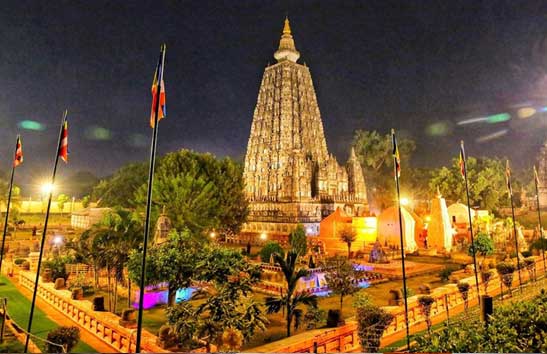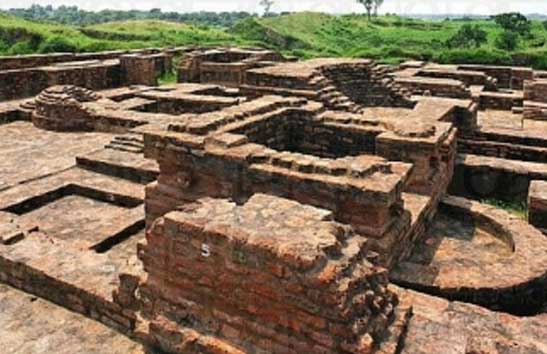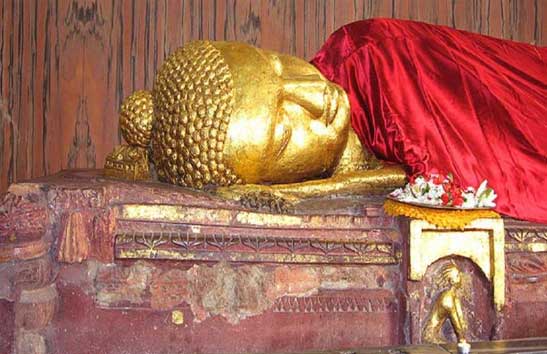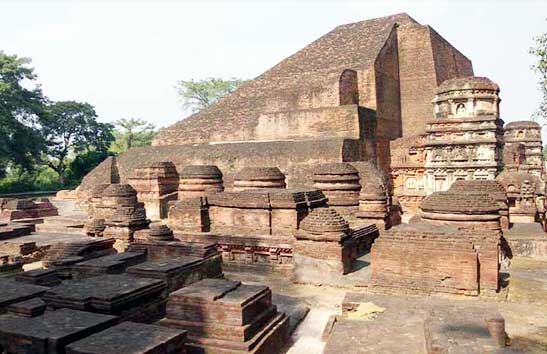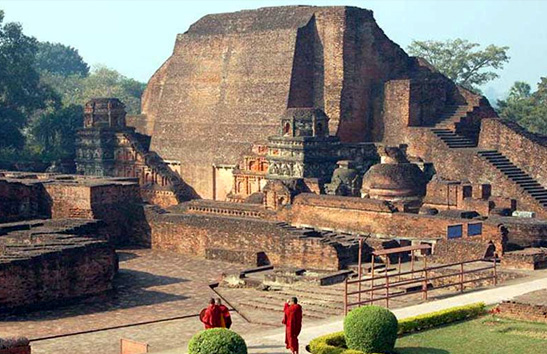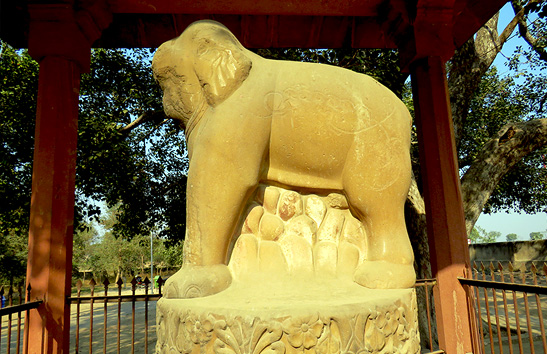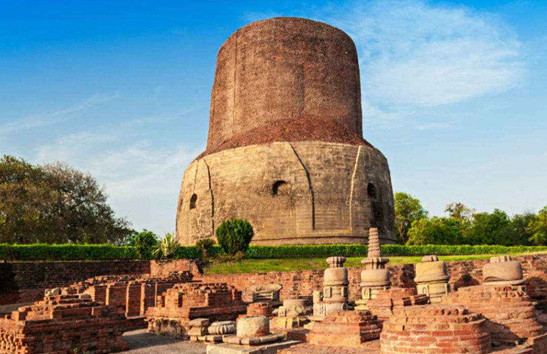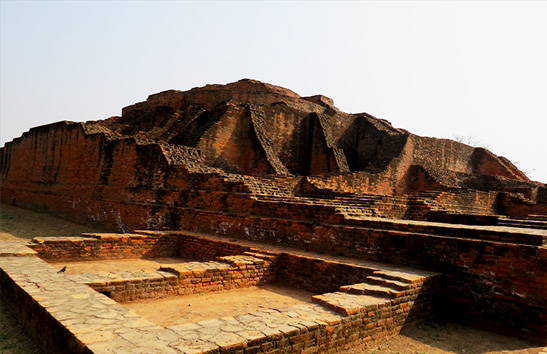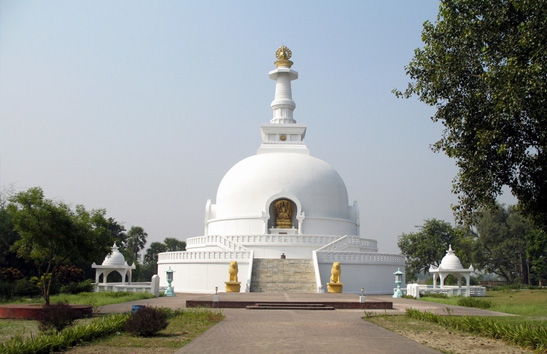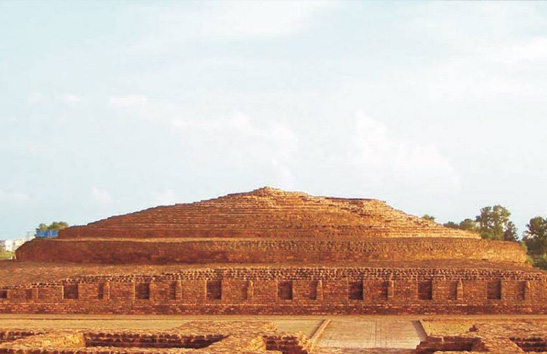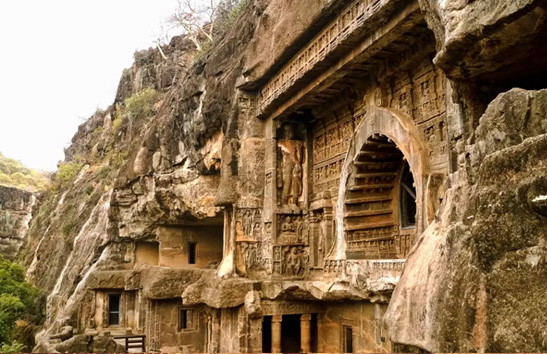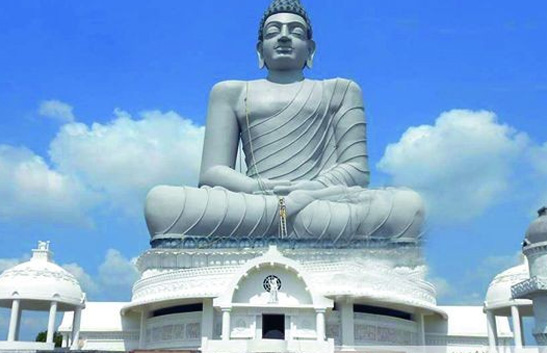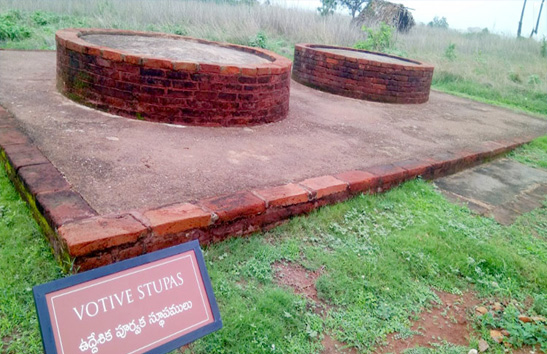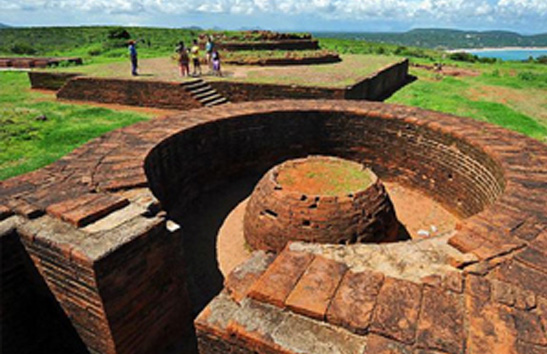Lumbini
The place where the Buddha was born
- Country : Nepal
- State : Rupendehi
- Language :Nepali and English
- Location :22 Kms from Bhairahawa
- Best time to visit :October to March
- Tourist places to visit :Mayadevi Temple , Asokan Pillar , Buddhist Monasteries, Stupa
- Significance : Lord Buddha’s birth place
- Nearby Tourist Places :Bodhgaya, Lumbini , Bodhnath , Kathmandu , Rajgir , Nalanda , Vaishali , Kesaria , Lauria Nandangarh , Varanasi , Kushinagar etc.
- Festivals to visit :Buddha Purnima , Losar , Asalha Day ,
Siddhartha, the son of Sakya king Suddhodhana and queen Maya Devi was born in the Lumbini garden in 623 BC. Lumbini, a “World Heritage Site”, is located in the Himalayan foothills of Nepal.
Queen Maya Devi gave birth to little Siddhartha while traveling from Kapilavastu to Devadaha (her parent’s home) to give birth to her first child as per the tradition of that time. Along the way she was passing through the Lumbini garden where she stopped to admire the Sal trees in full bloom. She gave birth to Siddhartha on the full moon day of Vaishakha month, in standing position holding the branch of a sal tree.
The Buddhist literature mentions that newly born Siddhartha walked 7 steps towards the north and declared to be the chief in the world, and this shall be his last birth and there will be no more becoming for him.
A great immeasurable light emerged at the time of his birth penetrating even the darkest of the places. Simultaneously a Bodhi plant erupted from the soil in Uruvela (present-day Bodhgaya) at the same time of the birth of Buddha (the same tree under which Siddartha attained enlightenment).
In 249 BC Emperor Asoka visited Lumbini and placed a commemorative stone tablet at the exact spot of the birth of Buddha. He also erected a stone pillar to commemorate his visit.
Major attractions in Lumbini:
Sanctum Santorum :- The exact spot of the birth of Buddha was discovered after excavations of the old Maya Devi temple, in the same direction as described by the great Chinese pilgrim Hieun Tsang. The marker stone, buried deep in the sanctum sanctorum was placed by Emperor Asoka in 249 BC was. One can see the marker stone (70cmX 40cmX10cm) kept in a bulletproof glass at the Sanctum Santorum.
Nativity sculpture :- The nativity sculpture dates back to the 4th century BC and is placed in the new temple built over the exact spot of the birth of Buddha. The Nativity sculpture depicts the nativity scene. It has an image of Maya Devi, holding the branch of a sal tree, and next to her is Prajapati, her younger sister. The newly born Siddhartha is depicted in a standing position with two Devas receiving him.
Asokan Pillar :- The Lumbini Pillar was erected by the Mauryan Emperor Asoka in 249 BC. Originally, it had horse capital which was lost when lightning struck the pillar and the pillar got broken into two parts. Today the pillar measures 6.7 meters and stands in the Lumbini Park. The inscription engraved on the pillar testifies Lumbini as the birthplace of Buddha.
Puskarini pond :- Close to the Asokan Pillar there is the holy pond, Puskarini, which is believed to be the same pond where Queen Maya Devi had taken bath before giving birth to Siddhartha.
Kapilavastu: :- Kapilvastu, the capital of Sakyan Kingdom and the place where Siddhartha spent his 29 years, is around 27 km from Lumbini at the present-day Tilaurakot (in Nepal). This is also the place where Siddhartha renounced the material world in search of enlightenment. The ruins of Kapilvastu include the remains of the fortification wall & eastern and western gates. The Eastern gate, through which Siddhartha took renunciation, is called the Mahabhiniskramana Dwara.
Niglihawa :- The birthplace of Kanakmuni Buddha is situated around 3 km from Tilaurakot. King Asoka erected a pillar in 249 BC to mark his pilgrimage to the site, which has got broken into two pieces. The lower part having inscriptions is submerged in the ground while the upper part is lying on the ground.
Gotihawa :- Situated around 7 km from Tilaurakot is believed to be the birthplace of Kakusandha Buddha. Gotihawa is marked by a stupa and an Asokan Pillar erected in 249 BC.
Kudan :- This is the site of ancient Nigrodharma (the Banyan Grove) which king Suddhodhan offered to Buddha when he first visited Kapilavastu with his 300 disciples, after enlightenment. It was the same place where his son Rahula asked for his inheritance and he was initiated into Buddhism. This is also the site where Prajapati Gautami, his second mother offered him a robe.
Ramagama Stupa :- The tribe of Koliyas obtained their share (one of the eight parts) of Buddha’s Relic which they enshrined in Ramagama. They built a Stupa on the banks of Jharahi River which is the only original undisturbed Dhatu Stupa in the world, containing the relics of Buddha.
Devadaha :- Devadaha was the ancient capital of the Koliya kingdom, and the maternal home of Queen Maya Devi, mother of Buddha. Devadaha is around 57 km from Lumbini and is marked by several historical sites including Maya Devi temple.
Buddhist temples, monasteries, and meditation centers :- There are numerous Buddhist temples and Buddhist meditation centers in Lumbini which should be visited. Major Buddhist temples that are recommended to visit include the Nepalese Vihara, Burmese Vihara, and the Tibetan Vihara.
How to Reach Lumbini
Lumbini could be accessed from Kathmandu. Kathmandu is international Airport. There is another option to reach Bhairahawa Airport which is nearest.
Book Now





